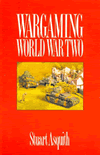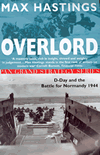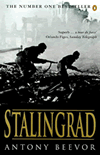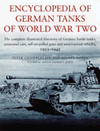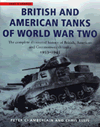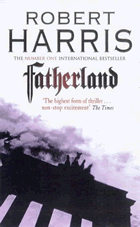Otaire de Vigneur
By Felix
"This morning the British Ambassador in Paris handed to the French Government a final note stating that unless we heard from them by 11 o'clock that they were prepared at once to withdraw from Spain a state of war would exist between us. I have to tell you now that no such undertaking has been received and that consequently this country is at war with France."
Neville Chamberlain, Radio Broadcast, September 3rd 1939.
The French Invasion of England
"...this is the BBC broadcasting from London. Dover has been invaded by forces belonging to France, but they are failing to establish a foothold and should be pushed back into the sea by tonight. Their action has been condemned by Prime Minister Chamberlain..."
 Jack Walsh switched the radio off, recognising the propaganda for what
it was. He grabbed his boots, time to go undercover, time to hit the French
where it hurts. He made his way to the Operating Base, or OB, where they
would watch for French troops, tanks and convoys. Striking a blow for
Britain.
Jack Walsh switched the radio off, recognising the propaganda for what
it was. He grabbed his boots, time to go undercover, time to hit the French
where it hurts. He made his way to the Operating Base, or OB, where they
would watch for French troops, tanks and convoys. Striking a blow for
Britain.
It was just before the start of the war when Winston Churchill, as the First Lord of the Admiralty, started making plans for the possible use of Auxiliary Units in the defence of Britain against invasion by a foreign power. Under great secrecy, men and women were recruited to play their part against the invaders. Some would be observers, watching. Others would be in communications, signalling to the British Army. A few would be at the sharp end, they would be fighting
Jack Walsh remembered how nine months ago, a stranger had come to his farm and talked about recruitment, recruitment into the British Resistance. It was now or never, the British Resistance would strike a blow for freedom. It was Tuesday, September 17th, 1940.

The Introduction
A French invasion of Britain circa 1940, outlandish speculation or a historical probability. A white paper was published in the 1930's outlining a British defence against a French Invasion and what should be done to prevent this from happening. Even the airfields, from where the Spitfires and Hurricanes of the RAF beat back the German Luftwaffe, were originally built as a defence against a possible French attack. Before the First World War, it was considered that in the unlikely event of war, it would be Britain and Germany fighting France. The French were considered our natural enemies, whilst the Germans were our brothers. But history and tradition were ignored, and in 1914-18, we fought with France against our common enemy, Germany.
Many historians argue that the Second World War was a direct result of the First. The way in which the winning nations reacted to and treated the defeated Germany after 1918, could be argued contributed to the rise of nationalism and the eventual rise of Hitler and the Nazis. For this alternate history, what of the rise of Nazism? The French invaded the Rhur in the twenties, because Germany was failing to pay her reparations. Could it not be argued that the stronger elements of the French government in the early 1930's decided that Hitler was a problem and had to be dealt with. Following the demise of Hitler, could not the French again be worried by Franco in Spain?
What this article aims to do is to show a "what if" scenario that may have happened if things had turned out slightly differently. It can be used as a justification for a background to gaming battles between French and English forces in the early 1940's.
The Background
The end of the Great War, or the "war to end all wars" led to major disarmament by the allies, as the true horrors of modern warfare hit the people. The feeling that somebody must be guilty for this horror, led to the Treaty of Versailles and the punishment of Germany. As well as reducing her armed forces, she also had to pay reparations to the allies. It was this treatment that, so could be argued, the rise of nationalism in Germany. Hitler playing on this, tried to take power in 1923, the Munich Putsch. Arrested and sent to jail, he continued to rise in popularity and power, eventually becoming Chancellor in 1933.
The French government were horrified by the "election" of this militaristic fascist leader. Various liberals and appeasers within the government proffered a non-intervention policy, "we can have peace with this man", they said. However, this was not to be. Hitler started to publicly rearm Germany, which had been going on for some time in secret. He began making claims about uniting all the German peoples across Europe: this scared the French government. But when Hitler, marched his troops into the demilitarised zone across the Rhine, this infuriated the French, they gave Hitler an ultimatum,: German troops must leave the "demilitarised" zone, and be back behind the Rhine within one week, otherwise France would be at war with Germany. Hitler, decided that the French were bluffing, and he had made a bad decision.
France looked to Britain for diplomatic support and military aid, the government, still remembering the Great War, decided that their policy of appeasement was the best order of the day. Anyway, some Members of Parliament argued, wasn't it up to Germany how Germany was defended and not the French! America, still maintaining an isolationist policy, didn't even bother replying to the French government. Holland and Belgium, continued to profess their neutrality. The French began mobilisation of their armed forces. Hitler again, decided that the French were bluffing and that this was a scare tactic to ensure his co-operation. He thought, that the French did not want to go to war again.
The week was up, the French decided enough was enough. Within four hours of the ultimatum, the first French troops and tanks were crossing the border. The German Whermacht, under-trained and with poor and minimal equipment suffered terribly under the French onslaught. With her superior armed forces, it took just under six months for the French to receive Germany's surrender. It had helped that Hitler was overthrown in a coup the week earlier by the Whermacht. A pro-French government was installed and French troops were garrisoned in most major towns. Britain did lean some diplomatic muscle on the French, but they ignored her. Churchill did at first support the French in their efforts to remove Hitler, but did make comments about a curtain of onions been drawn across Europe.
Protests in Austria, and the Nazi takeover three weeks later in Vienna, got a rapid response from the French. Aided by Belgium and Dutch Corps de Libre, they defeated Austria in four weeks. Again a pro-French government was installed, once more Britain made diplomatic efforts to get the French out, but they were ignored. America looked upon the situation from afar, but the isolationist policy beloved by her people, ensured that once more that America would stay out of Europe's problems. France was gaining support from Russia, who had seen Hitler as a threat. The Russians started making noises about Franco in Spain, they were aiding the opposition against Franco. This clinched the next French action, they saw Franco's Spain as a threat, in a similar way they had seen Hitler's Germany. At first they tried various diplomatic means to stop Franco, when this failed, military aid to his opponents. However, Franco was getting money and military support from America. Italy's Mussolini was also providing much needed weaponry. He even had a few German units fighting for him, stragglers from the earlier invasion of Germany.
After an "incident" on the border, the French launched their invasion of Spain on the 1st September 1939. Britain this time reacted, more out of fear of France, rather than supporting Franco in Spain. An ultimatum was delivered by the British Ambassador in Paris to the French government. Three days later, Chamberlain spoke to the people. Britain was at war with France.
The French continued fighting in Spain, their massive equipment superiority and the support by a large number of the Spanish population meant victory was certain. In the end it took nearly eight months of fierce fighting, much of it in the streets of towns and villages across the country.
Britain made a lot of noise during this time, and dropped hundreds of thousands of leaflets on French towns. On the seas however, the war was been fought, various British and French ships were sunk in major sea battles. The Royal Navy was taking a battering, the French, reinforced with the addition of ships from the German fleet did not stop. The first air attacks on British airfields in June 1940 was a surprise, the Battle of Britain was on. However, with the industrial might of an occupied Europe behind her, the RAF could not survive the onslaught of the hundreds of French planes, some of which were of German design.
It was the evening of Monday, September 16th, when the French invasion fleet left Calais bound for Dover.
The French
With the second largest army in the world in 1940 and some of the best tanks then in service the French Army was a force to be reckoned with. Of course most of the rearmament of France was due to the threat of Hitler's Germany rather than planning for an invasion of England.
Armed with such powerful tanks as the Char B1 and the Somua S-35, the French tanks though slow, were well armoured and armed with relatively powerful weaponry and were more than a match for their real German counterparts and easily better than any British tank. During the actual war, the French airforce was outmatched by the Luftwaffe, but in this alternate reality, at the time of their invasion of Germany, the Luftwaffe was small and under-equipped.
In this alternate timeline, they also have access to the huge industrial might of Germany, as Germany used Czech equipment in the battle for France and would have used French equipment in an invasion of Britain. Likewise, the French would probably use German weaponry, especially where it was superior in design. Repainted in French colours, this is an interesting alternative unit to muster. For those still wondering, even the Americans used German designs after the war, not only jet aircraft, but the majority of America's rocket program was based on work done by Nazi Germany.
The British
Without Dunkirk, the BEF would have remained on British soil, and more important so would have their equipment. They would have their tanks and heavy guns - that would have been missing in a German Operation Sealion assault. Aided by (or should that be hindered) by Home Guard units, the regular army would be ready and waiting for the French attack, and ready to push them back into the sea. The invasion would be much more difficult for the French than it would have been for the Germans.
The British would have access to the infantry tanks such as the Matilda I and II, and the Valentine. In service would be the cruiser tanks, the A9, A10 and A13. Also would be the use of the Mark VIB light tank - out-dated and outmatched. The infantry would no doubt have higher morale, without the defeat at Dunkirk and the fact they were defending their home country, would lead to a highly motivated force.
One possible option would have been the use of Auxiliary Units, or British Resistance in opposing a successful invasion. They would be used behind the lines to hinder the French advance.
Also what about aid by Italy's Mussolini , could there be a mutual alliance between Britain and Italy, sharing a common enemy? This gives the option of using Italian equipment.
The Alternatives
I have given one alternative history that can be used to "justify" a French invasion of England. One of the benefits of using alternative timelines is that you can change history even more to suit what you see to be the "correct" timeline.
For instance what of Oswald Mosley, how would France react to a fascist UK state that continually mocked and threatened the sovereignty of the French nation, in return the French retaliate to "liberate" Britain. Another alternative would be for the Mosley fascist state to invade France, be repulsed and the French invade to be rid of Mosley.
There is also possible American involvement, okay in reality they waited until late 1941 before entering the war, the might of the American war machine could certainly decided the outcome of any conflict. Likely they would support Britain, but they could aid a French "liberation" of a fascist UK. But if this is the case, we do have to consider what the Japanese would do. They invaded and conquered many French colonies in South-East Asia, would they have the same relationship with France that they had with Hitler's Germany, unlikely I think.
The Wargame
All Otaire de Vigneur really is, is an alternate Second World War, thus any scenarios already published could be quite easily converted for possible games. However a few ideas anyway.
We have the actual invasion, an amphibious assault on a heavily defended beach and port, aided by aircraft, parachutists and glider troops. This would make a very large game, but you could just isolate a small action between a few troops and tanks on one part of the beach.
The street clearing within Dover as the invaders secure the port for reinforcements from the sea. Fighting in and amongst the houses, hand-to-hand combat and very dirty fighting. Street fighting was a major part of the Second World War resulting in the use of specialist troops and equipment. The French could convert some of their heavier tanks for use in these operations, heavy top armour, a bulldozer blade and armed with a petard style mortar and heavy machine guns.
The first push inland to gain that vital bridgehead that will ensure victory. A retreating enemy that must be caught and destroyed. This could be followed by the counter attack from their first line of defence by the British Army in a valiant attempt to push the invaders back into the sea. Tanks versus tanks in a major land battle, supplemented by aircraft on both sides. Again, cold be a large game, or isolate an incident, a skirmish action perhaps.
A French commando assault on a British train depot defended by an armoured train. Coming in by glider, the commandos must destroy the depot, and make their way to the coast, to meet up with their transport back home. A "Dirty Dozen" action, that would make an interesting role-playing skirmish game, as would British Auxiliary Units in action against a French convoy on the country lanes of Kent.
The Models
The wargamer is well catered for in this period in all scales, 1/300, 1/200, 15mm, 20mm and for those extravagant amongst us even 54mm.
My own revival in this period of Operation Sealion was the introduction of the 15mm Home Guard ranges by S.D.D. and Peter Pig. These ranges cover most of what you need, all the major tanks of the British, French and German forces, with few oddball Belgium and Dutch tanks as well. They also have Home Guard equipment, the armoured trucks that no doubt would be used to appease the tank shortage. S.D.D. also cover these ranges in 1/200 and 20mm. These white metal miniatures are of a good quality and very reasonable value of money. I did start wargaming Second World War actions in 20mm, but got so annoyed with having to build all those plastic kits. Resin and metal in 20mm was nice, but expensive and to top it all a lack of table space didn't help. The advantages of 15mm were there, smaller space required, lower cost of miniatures and the speed of construction and painting. I appreciate that not everyone will think the same as me, but that's a good thing.
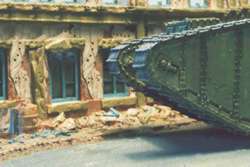
To add a bit of diversity to my games, I also have one of Minifigs' World War One British tanks, for use by a Home Guard unit (stolen from a local museum no doubt). For actual Home Guard figures, I supplement the figures available with World War One figures which add to the disorganisation of such units in a time of war.
For aircraft, you could use the large range of 1/144th aircraft available , which are just a bit small for 15mm, but look right flying overhead a 15mm battlefield. The only problem, they're plastic kits, so you could use 1/200th metal aircraft miniatures instead.
The Rules
I actually use a set of rules I wrote myself for these games. A variation of these rules was published in the January 1994 issue of Miniature Wargames, in my article, "It Fell Off the Back of a Lorry", for use in modern Russia. The version I use for Otaire de Vigneur scenarios include simple, yet fast rules for infantry, tanks and aircraft. As I said in my previous article, simplicity does not necessarily mean being unrealistic. The main influences were two sets of rules, WRG's DBA (Hordes of the Things actually) and Jim Webster's Hellfire rules from Wessex Games. The rules combine elements of both, the simplicity of HOTT and the realistic reaction rules within Hellfire. They were initially written for fighting "normal" Operation Sealion scenarios and also historical conflicts such as the battle for France, circa 1940.
Other Second World War rules sets would no doubt work easily well, so you might as well use your favourite set, depending on your choice of battle, size of figures and table space. I quite like, and would recommend, WRG's 1925-1950 rules for 1/300th tank actions.
The Conclusions
Inspiration for this article has come from a lot of sources, though the main inspiration was a comment from Simon as we looked at S.D.D.'s new Home Guard range, which was another source of inspiration. He mentioned how the Ministry of War had published a paper on a possible French invasion in the 1930's. This got me thinking and wondering.
I have been interested in the planned German Operation Sealion for many years, and have gamed many enjoyable battles within this fantastical situation. Recalling one particular battle from many a year ago, using Airfix's plastic World War One British Infantry as Home Guard armed with a variety of weaponry from molotov cocktails to a solitary Vickers Machine Gun. Opposing them an elite German Parachute regiment attempting to capture the local railway station expecting reinforcements from the south to turn up shortly. This was a most rememberable game. It was then very easy to see how a different style of game could be played using French and British forces, as well other situations in an Otaire de Vigneur alternate history: the initial French attack on the Rhine; the occupation of Austria; the that final straw for the British Government, the French attack on Franco's Spain; as well as the actual Otaire de Vigneur. I have always liked the idea of gaming French forces, and this scenario gives me the opportunity to pitch them against another favourite, the Home Guard.
This is, to me, a fantastical situation - fantasy or science-fiction, take your pick - and never happened (or if it did I was never told about it). I have to admit that I have used a few cliches and taken a few liberties. Also I have used a timetable of events that is very similar to what actually happened. But I was a bit annoyed that I couldn't write about the new French strategy of lightning attack (as in Blitzkrieg), because it sounded silly to say, "and the French army used a new strategy called "eclair".
The Reprise
Jack Walsh checked his watch, the moon hidden by cloud made it difficult to see, but the light from the French camp was just enough. The explosion rocked the countryside, as a platoon of French heavy tanks became an incandescent ball of flame and smoke. These would be one load of Frenchies who would not be drinking coffee in a pavement cafe again.
